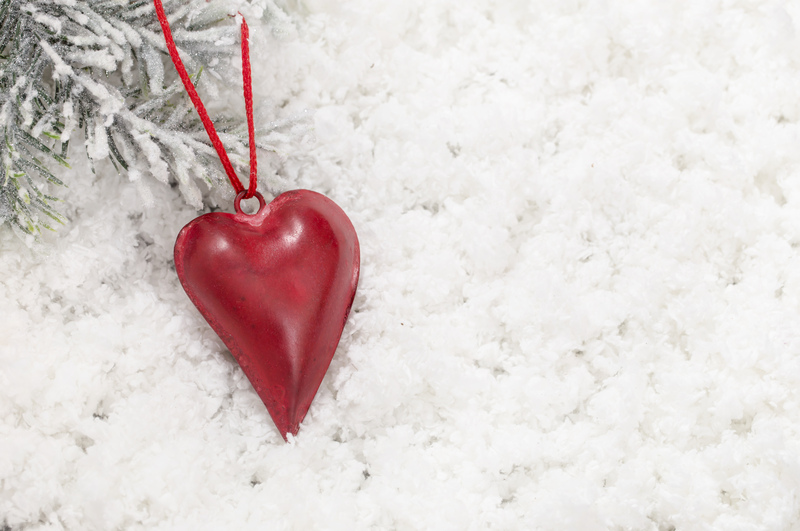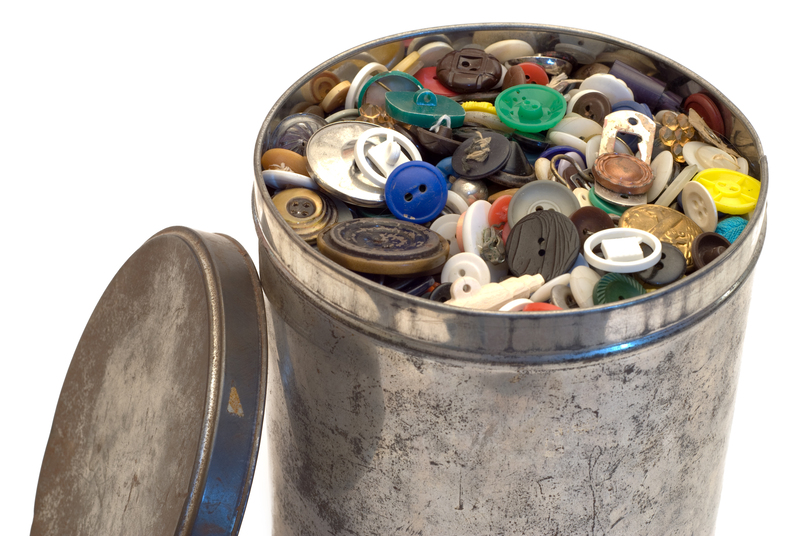Understanding the Risks: Plastics to Avoid
Plastics have revolutionized the way we live, from food packaging to automotive components and even in medical devices. However, emerging research continues to highlight health and environmental concerns related to specific types of plastics. If you're concerned about the safety of the products you use daily, it's crucial to become informed about which plastics to avoid, as well as the potential risks they pose to both your health and the planet.
Why Should We Be Concerned About Certain Plastics?
Plastics consist of various chemicals, some of which can leach into food, beverages, or even the environment. Understanding which plastics can be harmful is essential, as exposure to certain chemicals has been linked to health issues such as hormone disruption, developmental problems, and even some cancers. Furthermore, not all plastics are created equal--some are more likely to release toxins than others.
The Ubiquity and Problem of Plastics
With global plastic production exceeding 350 million metric tons per year, the presence of "bad plastics" in our lives is nearly unavoidable. From water bottles and food containers to children's toys, plastic is everywhere. The most worrisome aspect is that not all plastics are equally safe. Certain plastics release toxic chemicals when heated, scratched, or worn down, which can contaminate food or leach into soil and water sources.

How to Identify Plastics: Understanding the Recycling Codes
One way to recognize which plastics to avoid is by checking the resin identification codes--the numbers (1 to 7) inside the triangular recycling symbols on plastic products. Each number represents a specific type of plastic, some of which are considered much safer than others.
- 1 (PET or PETE): Polyethylene Terephthalate
- 2 (HDPE): High-Density Polyethylene
- 3 (PVC): Polyvinyl Chloride
- 4 (LDPE): Low-Density Polyethylene
- 5 (PP): Polypropylene
- 6 (PS): Polystyrene
- 7 (Other): Miscellaneous plastics, includes polycarbonate and BPA-containing plastics
To minimize risk, you should become familiar with these codes and choose safer plastics whenever possible.
Plastics to Avoid: The Top 3 Types to Watch Out For
Polyvinyl Chloride (PVC - #3)
PVC is widely used in piping, food packaging, toys, and cling wrap. However, it is also one of the most hazardous plastics for human health and the environment.
- Risks:
- Contains phthalates, which are known endocrine disruptors.
- May release dioxins during manufacturing or incineration, classified as probable human carcinogens.
- Commonly treated with toxic additives to make it flexible or flame-retardant.
- What to Avoid:
- Plastic wrap (especially soft, clear wraps)
- Some food and water containers
- Children's toys not labeled as "phthalate-free"
Recommendation: Opt for alternatives such as glass, stainless steel, or safer plastics for food storage, especially for hot or acidic foods.
Polystyrene (PS - #6)
Polystyrene, also known as styrofoam, is used for disposable plates, cups, egg cartons, takeout containers, and packing materials.
- Risks:
- Made from styrene, a chemical linked to potential neurotoxicity and increased risk of certain cancers.
- Can leach toxic chemicals, especially when heated or used with hot/greasy food and beverages.
- Difficult to recycle, contributing to persistent environmental pollution.
- What to Avoid:
- Take-out containers
- Foam coffee cups
- Disposable plates and utensils
Recommendation: Choose paper, glass, or reusable containers for food storage and transport; bring your own mug for coffee shops.
Polycarbonate and Other Plastics (Other - #7)
Category #7 is a catch-all for miscellaneous plastics, including polycarbonate, which often contains BPA (bisphenol-A)--a chemical of great health concern.
- Risks:
- BPA can mimic estrogen and interfere with hormonal systems.
- Linked to reproductive disorders, behavioral issues, and increased risk of certain cancers.
- Some "BPA-free" plastics may contain similarly harmful alternatives such as BPS.
- What to Avoid:
- Water cooler bottles
- Hard, clear plastic baby bottles and sippy cups (unless labeled "BPA-free")
- Some reusable water bottles
Recommendation: Use stainless steel, glass, or certified BPA-free products, but remember that "BPA-free" does not always mean risk-free.
Plastics to Limit: Use With Caution
Polyethylene Terephthalate (PET or PETE - #1)
PET is the most commonly used plastic in water and soda bottles, as well as food packaging.
- Risks:
- While generally considered safe for single use, repeated use or heat exposure may cause leaching of antimony and other chemicals.
- Not designed for reuse; bacteria can build up if not cleaned properly.
- What to Avoid:
- Reusing disposable water bottles
- Exposing PET bottles to heat (e.g., leaving them in the car)
Recommendation: Use PET plastics for single use only and avoid exposing them to high temperatures.
Safer Plastics: Preferred Alternatives
While certain plastics should be avoided, others are considered safer for food storage and regular use. These include:
- 2 (HDPE) - High-Density Polyethylene: Used for milk jugs, detergent bottles, and juice containers. HDPE is resistant to leaching and generally considered a safer choice.
- 4 (LDPE) - Low-Density Polyethylene: Used in bread bags and some food wraps. LDPE is flexible and has a lower risk of chemical leaching.
- 5 (PP) - Polypropylene: Used in yogurt containers, straws, and takeout boxes. PP is heat-resistant and less likely to leach harmful chemicals.
Choosing these plastics when necessary can reduce your exposure to harmful chemicals.
Special Concerns: Plastics and Children
Children and infants are more vulnerable to the risks of toxic plastics because their bodies are still developing. Intense focus is placed on plastic types to avoid in children's products:
- PVC toys or teething rings containing phthalates
- Polycarbonate baby bottles containing BPA
- Polystyrene plates and utensils for toddlers
Tip: Always look for toys and feeding products labeled "BPA-free," "phthalate-free," and "PVC-free." Opt for alternative materials such as natural rubber, silicone, stainless steel, or glass whenever possible.
Plastics and The Environment: Why Avoid Certain Plastics?
Not only do some plastics pose health threats, but their environmental impact is significant. "Problem plastics" like PVC, polystyrene, and polycarbonate:
- Take hundreds of years to degrade
- Release persistent pollutants into soil and water
- Break down into microplastics, affecting wildlife and, potentially, human health via the food chain
- Are difficult or impossible to recycle in most facilities
Choosing to avoid harmful plastics helps protect both the planet and your health.
Microplastics and Human Health
As plastics break down, they form microplastics--tiny particles that have been found in oceans, rivers, and even our drinking water. Recent research suggests that humans routinely ingest microplastics, although the long-term health implications remain under investigation. Avoiding "bad plastics" is one way to help minimize your contribution to microplastic pollution.
How to Reduce Your Exposure to Hazardous Plastics
Reducing your risk from dangerous plastics doesn't have to be complicated. Here are practical steps for a safer household and a more sustainable lifestyle:
- Check the recycling codes and avoid buying plastics labeled #3 (PVC), #6 (PS), and #7 (unless they're plant-based bioplastics).
- Do not microwave food or drinks in plastic containers unless labeled "microwave-safe and BPA-free."
- Avoid storing fatty, acidic, or hot foods in plastic containers as these are more likely to leach chemicals.
- Choose fresh, unpackaged foods when possible to reduce your overall plastic exposure.
- Transition to reusable alternatives such as glass, stainless steel, or uncoated ceramics for food storage and water bottles.
- Avoid single-use plastics like disposable utensils, straws, and plates.
- Look for eco-labels confirming products are free from BPA, phthalates, and other concerning chemicals.
- Educate family members about the potential risks of hazardous plastics, especially for children and pregnant women.

Frequently Asked Questions About Plastics to Avoid
Are "BPA-Free" Plastics Safe?
While "BPA-free" plastics reduce your exposure to bisphenol-A, it's important to note that some manufacturers use alternative chemicals like BPS, whose safety is not well-established. For the lowest risk, choose non-plastic alternatives or plastics labeled #2, #4, or #5.
Is It Safe To Reuse Plastic Water Bottles?
Most disposable water bottles are made from PET (#1), which is intended for single use. Continuous reuse can increase the risk of bacterial contamination and chemical leaching, especially if bottles are washed with hot water or exposed to sunlight.
Are Recycled Plastics Safer?
Plastics labeled #1 and #2 are the most commonly recycled, but recycled plastic does not guarantee freedom from harmful additives. Moreover, the recycling process does not remove all chemical contaminants.
Conclusion: Making Safer Choices With Plastics
Awareness is key when it comes to understanding the risks of plastics. By learning which plastics to avoid--specifically #3 (PVC), #6 (PS), and #7 (polycarbonate and others)--you can make safer choices for your health, your family, and the environment. At the same time, opting for alternatives such as glass, stainless steel, or safer plastic options ensures you reap the convenience of modern materials without the worry of chemical exposure.
Remember: Small changes can make a big difference. Start reading labels, choose wisely, and spread awareness to help create a safer, less polluted world for all.